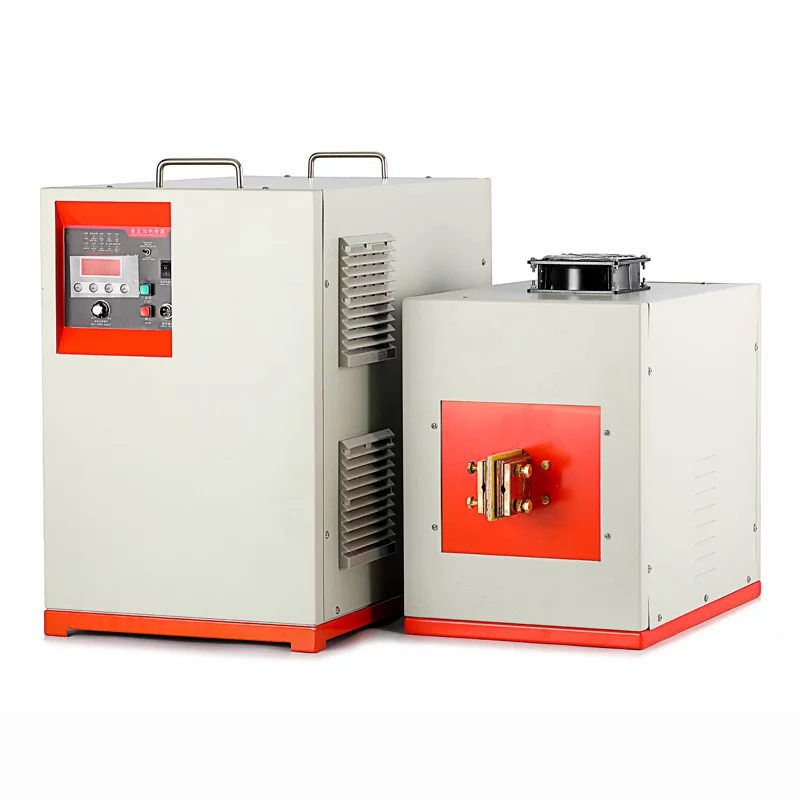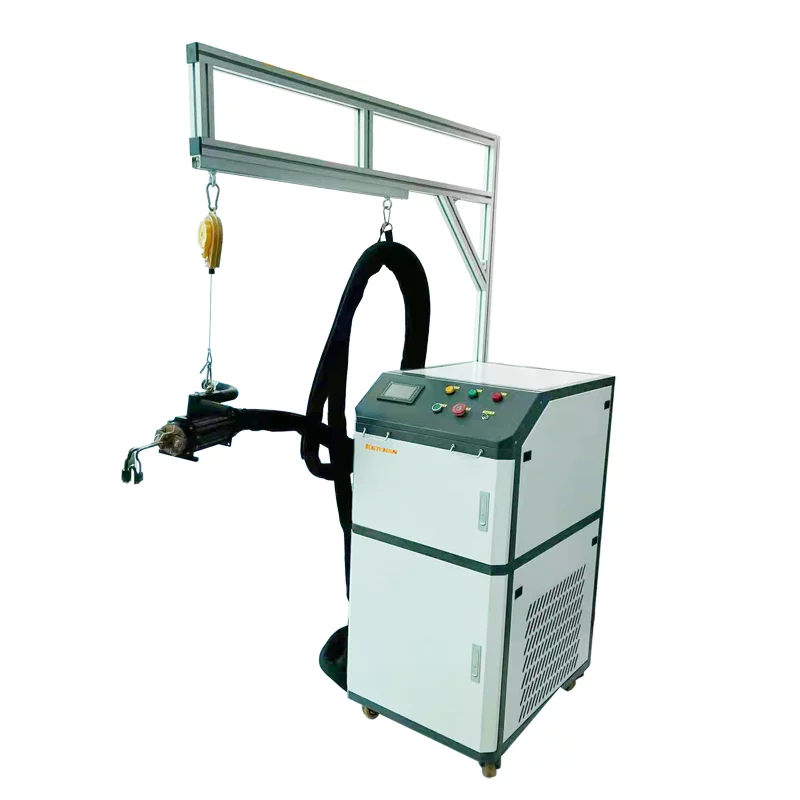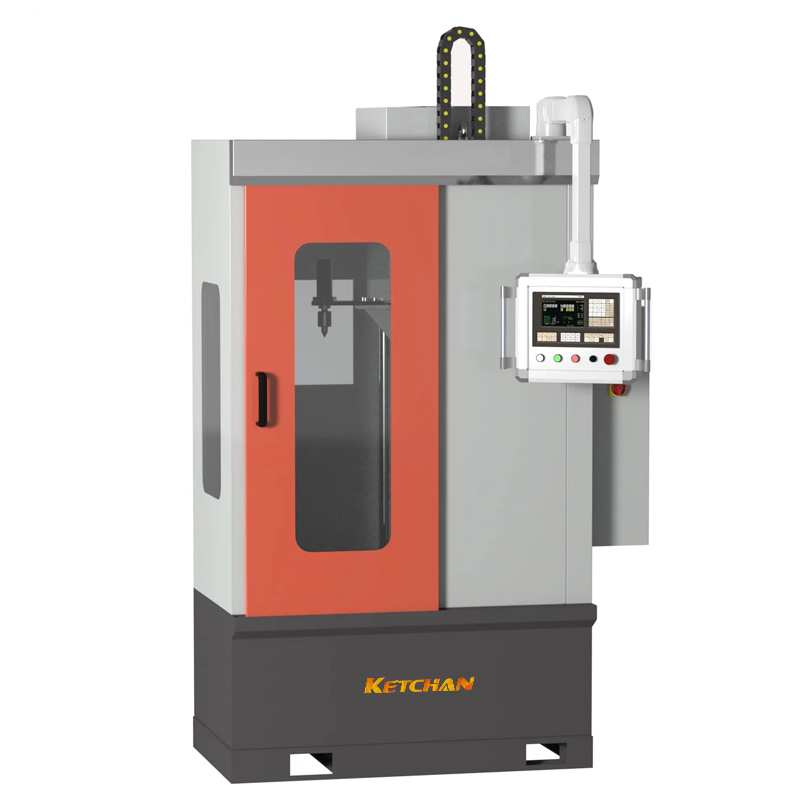Heat treatment is an important link in mechanical manufacturing. The heat treatment quality is directly related to the internal quality and performance of products or parts. In production, there are many factors affecting the quality of heat treatment. In order to ensure that the product quality meets the requirements stipulated by national standards or industry standards, all heat treatment parts must be inspected strictly from the beginning of raw materials entering the plant and after each heat-treatment process. Product quality problems cannot be directly transferred to the next process, so as to ensure product quality. In addition, in the heat treatment production, a competent inspector, only according to the technical requirements of the workpiece after heat treatment quality inspection and check is not enough. The more important task is to be a good adviser. In the production process of heat treatment, we must first see whether the operator is strictly implementing the technological procedures and whether the technological parameters are correct. In the process of quality inspection, if quality problems are found, operators should be helped to analyze the causes of quality problems and find out solutions. Control all the factors that may affect the quality of heat treatment to ensure the production of good quality, reliable performance, customer satisfaction.
1. Content of quality inspection of heat treatment
l Prior heat treatment
The purpose of pre-heat treatment is to improve the structure and softening of raw materials, so as to facilitate mechanical processing, eliminate stress, and obtain the ideal original structure of heat treatment. For some large parts, pre-heat treatment is also the final heat treatment, pre-heat treatment is generally used for normalizing and annealing.
1) Diffusion annealing of steel castings Because the grains are easy to be coarse when heated for a long time at high temperature, complete annealing or normalizing should be performed again after annealing to refine the grains.
2) Complete annealing of structural steel is generally used for improving microstructure, refining grain, reducing hardness, and eliminating the stress of medium and low carbon steel castings, welding parts, hot rolling, and hot forging.
3) Isothermal annealing of alloy structural steels is mainly used for annealing of 42CrMo and other steels.
Spheroidizing annealing of tool steels is to improve machining performance and cold deformation performance.
The purpose of stress relief annealing is to eliminate the internal stress of steel casting, welding, and machining parts, and reduce the deformation and cracking in the later working procedure.
Recrystallization annealing the purpose of recrystallization annealing is to eliminate cold hardening of workpieces.
7) Normalizing The purpose of normalizing is to improve the structure and refine the grain. It can be used as either a prior heat treatment or a final heat treatment.
The tissues obtained by annealing and normalizing above are pearlite. In the quality inspection, the focus is to check the process parameters, that is, in the process of annealing and normalizing, do a flow check the implementation of the process parameters, which is the first thing, at the end of the process is mainly to check the hardness, metallographic structure, decarburization depth, annealing normalizing items, ribbon, net carbide, etc.
l Annealing and Normalizing defect judgment
1) If the hardness of medium carbon steel is too high, the heating temperature is too high and the cooling speed is too fast during annealing. High carbon steel is mostly isothermal temperature low, heat preservation time, and so on. If the above problems occur, the hardness can be reduced by reannealing according to the correct process parameters.
2) Reticular structure this kind of structure mostly appears in subeutectoid and hypereutectoid steel, reticular ferrite appears in subeutectoid steel and reticular carbide appears in hypereutectoid steel. The reason is that the heating temperature is too high and the cooling speed is too slow, which can be eliminated by normalizing. The inspection shall be conducted according to the prescribed standards.
3) Decarburization is carried out in an air furnace when annealing or normalizing. When the workpiece is heated without gas protection, decarburization occurs due to oxidation on the metal surface.
Graphite carbon is obtained from the decomposition of carbides, mainly caused by too high heating temperature and too long heat preservation time. After the appearance of graphite carbon in the steel, problems such as low hardness, soft spot, low strength, great brittleness, and gray-black fracture will be found. When such graphite carbon appears, the workpiece can only be scrapped.
l The final heat treatment
The quality inspection of the final heat treatment in production usually includes the inspection after quenching, surface quenching, and tempering.
1) Deformation. Quenching deformation inspection in accordance with requirements, such as deformation in excess of that specified, should be obtained with straightening, if for some reason can’t alignment, and the deformation exceeds machining allowance, can do repair processing, the method is to artifacts in the soft state straightening after quenching tempering to meet the requirements, the general workpiece quenching tempering after deformation, no more than two-thirds to one-half allowance.
2) Cracking.No cracks are allowed on the surface of any workpieces, so the heat-treated pieces must be 100% inspected, with emphasis on stress concentration, sharp corners, keyways, thin-walled holes, thick-thin junctions, protrusions, and depressions, etc.
3) Overheat and overburn. After quenching, the workpiece is not allowed to have coarse acicular martensite superheated structure and grain boundary oxidized overheated structure, because overheated and overburned will cause a decrease in strength, increase in brittleness, and easy cracking.
4) Oxidation and decarburization. Small machining allowance of the workpiece, oxidation and decarburization to control some strict, for cutting tools and abrasive, do not allow the phenomenon of decarburization, in the quenching piece found serious oxidation and decarburization, the heating temperature must be too high or the holding time is too long, so must be done at the same time overheating inspection.
5) Soft spot. The soft point will cause wear and fatigue damage of the workpiece, so there is no soft point, the formation of the cause is mostly improper heating and cooling or raw material structure is not uniform, there are a strip structure and residual decarburization layer, etc., the soft point should be timely repair treatment.
6) Insufficient hardness. Generally, too high a heating temperature and too much residual austenite will lead to the reduction of hardness, too low heating temperature or insufficient holding time, insufficient quenching cooling speed, and improper operation of the workpiece will lead to insufficient quenching hardness. Only repair the above situation.
7) Salt bath furnace.High and medium frequency and flame quenching workpiece, no burn phenomenon.
After the final heat treatment of the surface of the parts shall not have corrosion, knock, shrinkage, damage, and other defects.
2. Items and methods of heat treatment quality inspection.
The technical requirements of heat treatment parts are different, the heat treatment process is different, and the quality inspection items and methods are also different. The quality inspection items and methods commonly used in heat treatment production are as follows.
l Chemical composition inspection.
1) Spark identification method. Experienced inspectors and heat treaters in heat treatment production can identify the chemical composition of parts by observing the spark characteristics of the material produced by the grinding wheel.
2) Spectroscopic analysis. The wavelength and intensity of the spectral lines of different elements can be measured and recorded with the spectrometer, and the elements and content in the material can be obtained by referring to the spectral line table.
3) Chemical analysis. Chemical analysis in the laboratory can be used to accurately determine the content of all elements in metallic materials. This method is most commonly used in factories.
4) Microzone chemical composition analysis. The methods of microregion chemical composition analysis are electron probe X-ray analysis, Auger electron energy spectrum analysis, ion probe analysis, and so on.
l Macrographic examination and fracture analysis.
1) Macro inspection method. The macroscopic experience of steel is commonly used for acid etching, including hot acid etching test, cold acid etching test, electrolytic acid etching, and so on.
2) Fracture analysis. The analysis includes macroscopic fracture analysis and microscopic fracture analysis.
l Microstructure analysis.
1) Identification of fiber structure of steel after heat treatment.
2) Inspection of microscopic defects of steel.
3) Inspection of non-metallic inclusions in the steel.
4) Layer depth determination of chemical heat treatment.
5) Tissue inspection of gray cast iron.
6) Tissue analysis of non-ferrous metals is commonly used.
l Mechanics performance test.
1) Hardness test of heat-treated parts.
2) Mechanical property test of heat-treated parts.
l nondestructive testing.
1) Detection of internal defects.
2) Surface defect detection.





